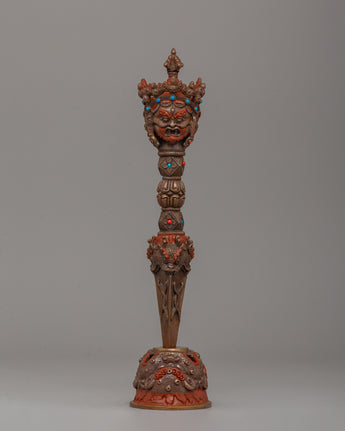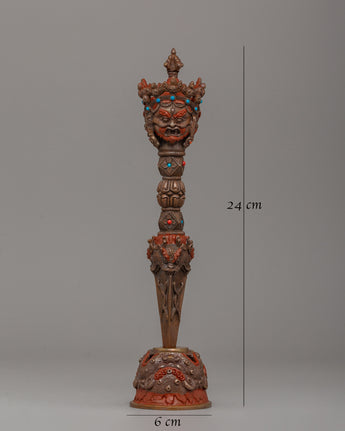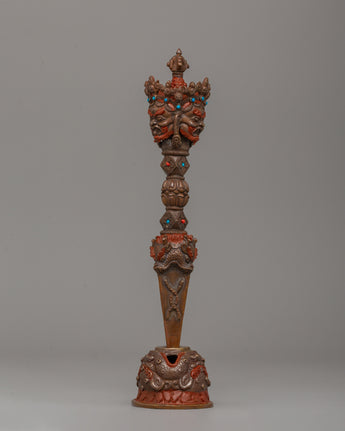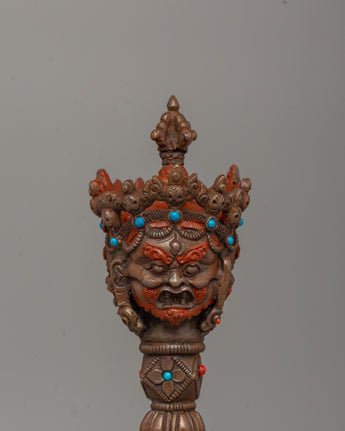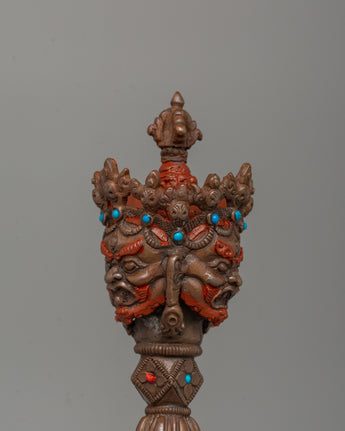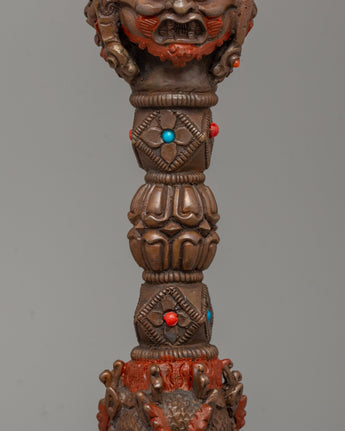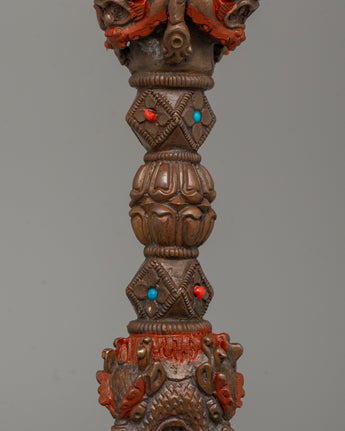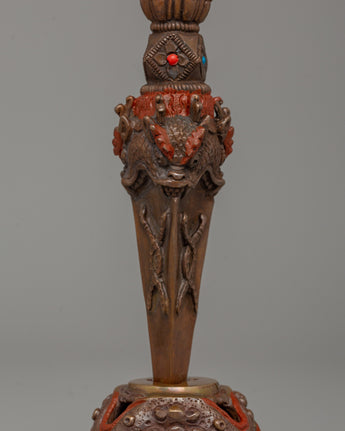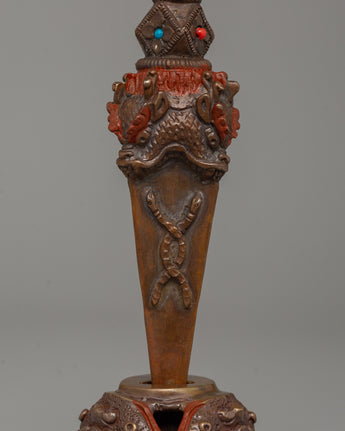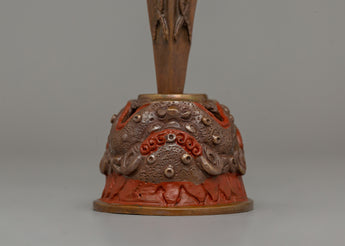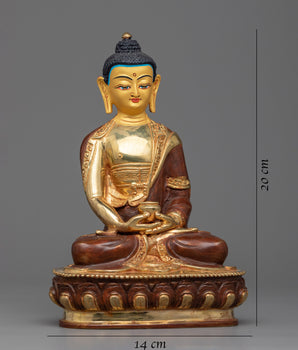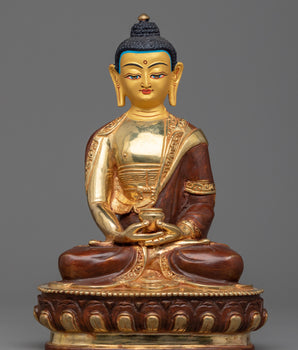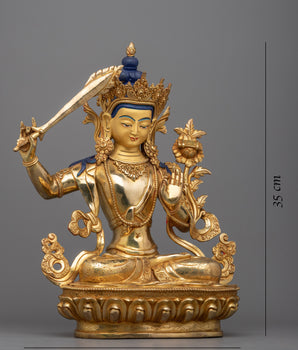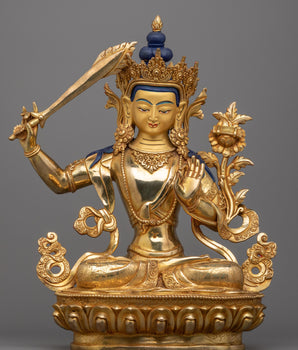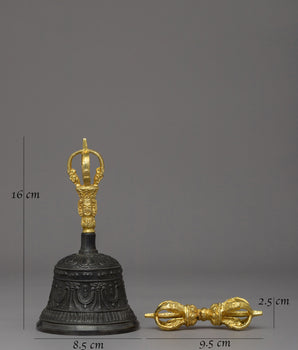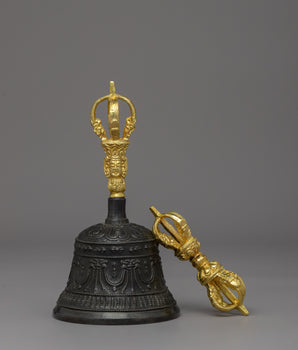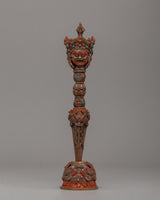
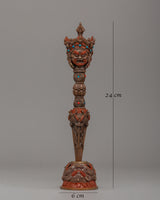
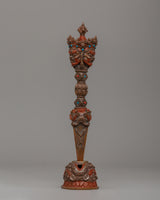
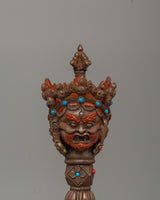
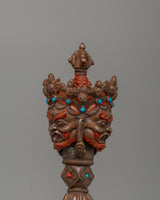
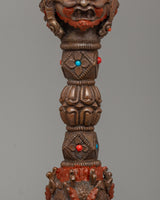
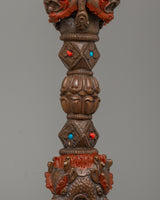
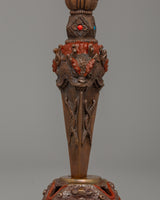
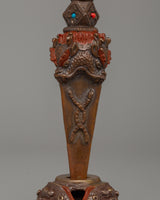
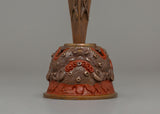
Phurba Ritual Item | A Sacred Tool for Energy Transformation

100% AUTHENTIC

HANDMADE

FREE SHIPPING
Traditional Tibetan Vajrakila Phurba Ritual Item for Protection and Healing
--------------------------------------------
Size: 24cm(Height) x 6cm(Width)
Weight: 0.56kg
Material: Oxidized Copper Body
--------------------------------------------
About The Ritual Item :
This remarkable Phurba ritual item measures 24 cm tall and 6 cm wide and is made of oxidized copper. Its rich, aged appearance adds to its spiritual significance. The oxidized finish lends it a timeless, ancient appearance that emphasizes its connection to traditional Tibetan rituals. The Phurba is a powerful ritual object used in Tibetan Buddhism to cut through ignorance and remove obstacles. It represents the ability to sever attachments and break free from the cycle of samsara.
The upper portion of the Phurba has a fierce and expressive face, representing the deity's wrathful aspect. This intense representation helps to repel opposing forces and protect the practitioner. The face is accented with vibrant turquoise and coral, adding to the piece's divine and protective qualities. These stones are thought to amplify the Phurba's spiritual power, bringing clarity and control to rituals.
The shaft of the Phurba is meticulously decorated with intricate details and patterns, demonstrating the skill of Tibetan artisans. The lower section transitions into a solid base that provides stability and strength. The vibrant colors and the combination of the oxidized copper finish and gemstones give this Phurba a sense of sacred authority, making it a necessary tool for Tibetan Buddhist practices and a beautiful and powerful work of art.
Introduction To The Phurba :
The ceremonial dagger (Sanskrit: Kila; Tibetan: phurba) is important for the expelling of evil and is thought to be especially effective in neutralizing the forces that obstruct Tantric Buddhist practice. It has ancient origins, first appearing in the Indian Rg Veda as the core blade of the vajra used by Indra to destroy the primordial cosmic snake Vritra. Kila, which means peg or stake in Sanskrit, was most likely associated with Vedic sacrifices. Meditation on the Vajrakila Tantra, an early Indian scripture first promoted in Tibet in the eighth century by Padmasambhava, one of the founding teachers of Tibetan Buddhism, is used to invoke the three-headed Vajrakila Buddha.
How to set up your own Buddhist Shrine?
Find a clean, quiet, and uncluttered spot
Set up an altar table, and cover it with an altar cloth that calls to you
Place your sacred item (statue, thangka, or a picture of Buddha) at the center


